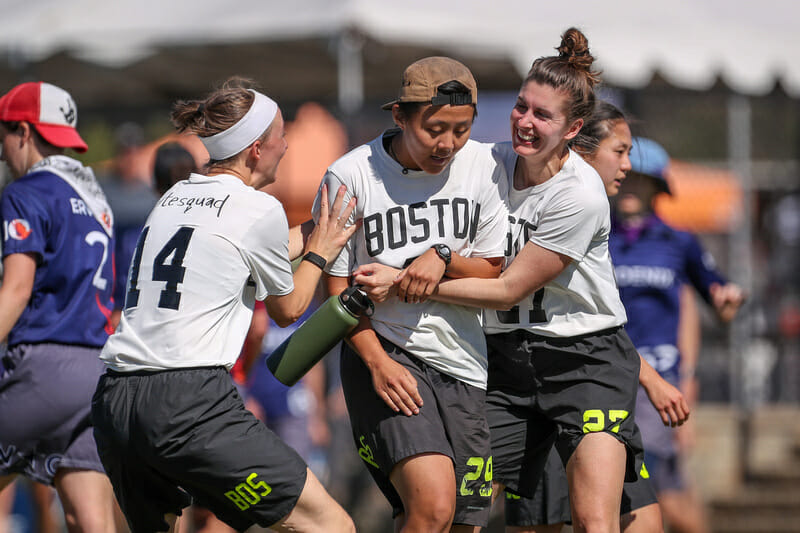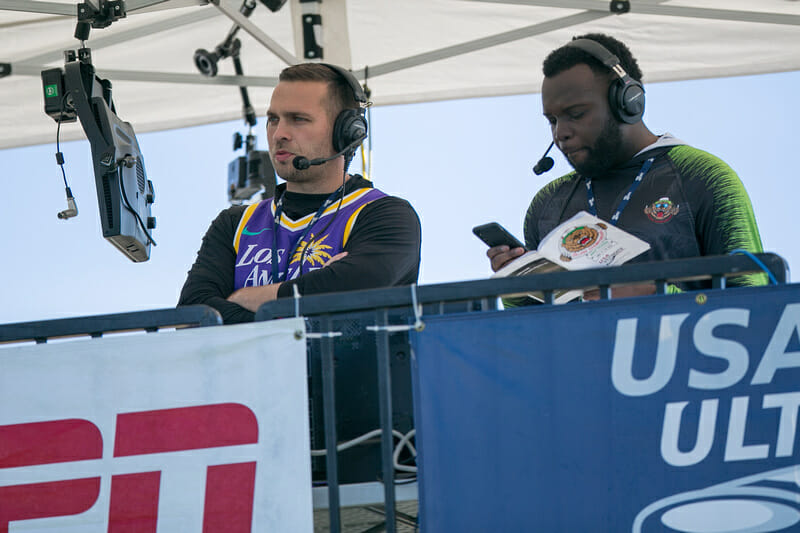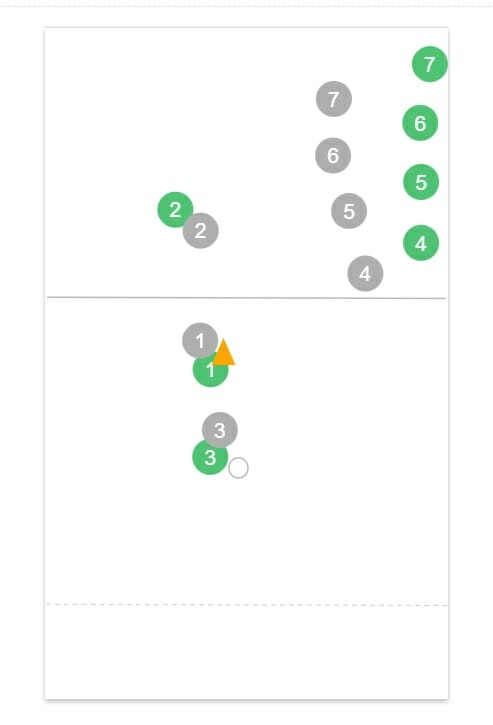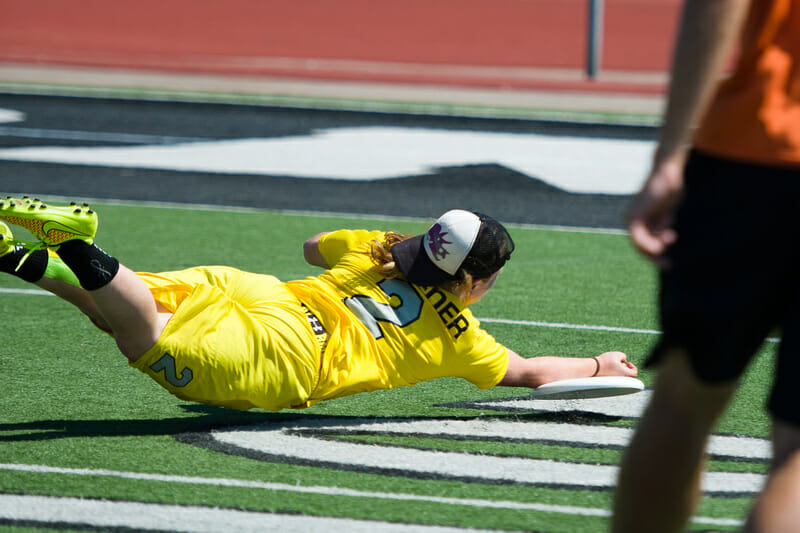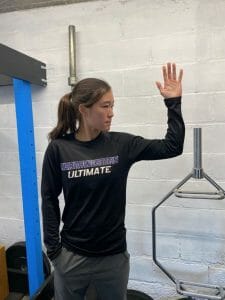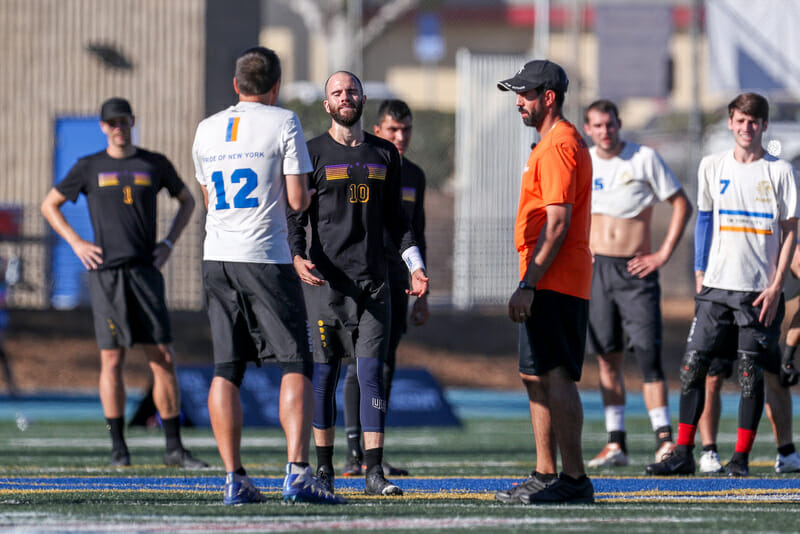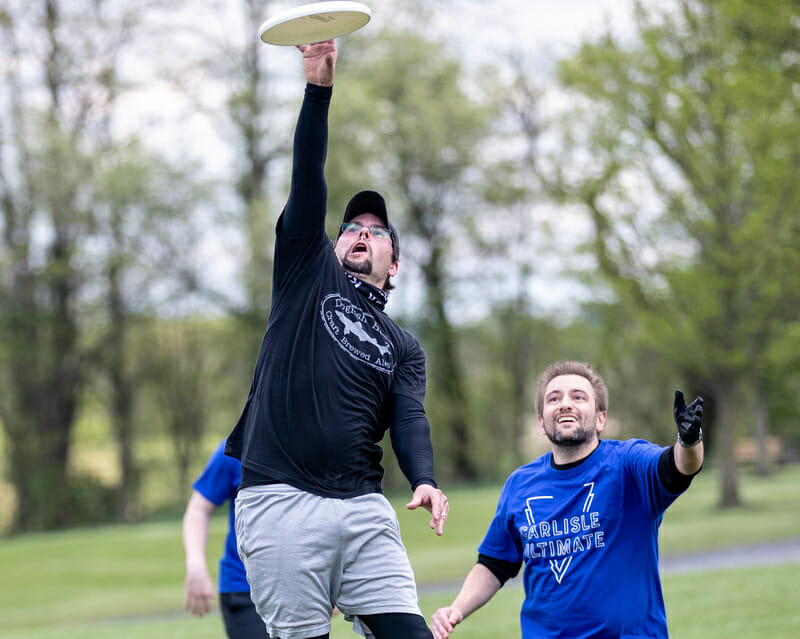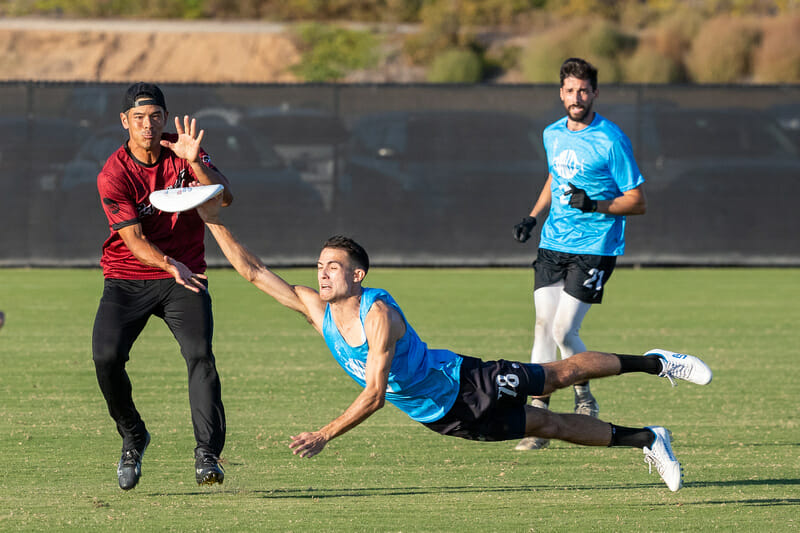
So you have the basics down. Your team can run, catch and throw. You’ve tried a few simple tactics: aim to trap the other team on the sideline in the wind, or set up a deep cut after an upline cut.
But what’s next? How is your team going to develop offensive and defensive strategies that will give you a chance against any opponent of a similar ability? This simple guide to strategy should help you out.
Firstly: what is strategy and how does it differ from tactics? There are many definitions – and it gets nuanced in military settings – but I will keep it simple. Strategy is what you want to do, and tactics are how you try to achieve that. While I will keep it focused on strategies, I will aim to give examples of tactics that will help you to achieve each.
Defense
I’m going to start with defense because I think most people start with offense, and therefore the biggest gains are to be had by stopping your opponent from doing what they want to do.1
Usually, a defensive strategy is a direct counter to an offensive strategy, or at least a perceived strategy. Often the slightest adjustment can make your opponent feel less comfortable, force them to reset the disc more often, slow down their offense, and hopefully all of that leads to more mistakes and therefore more opportunities for breaks. Fundamentally, defensive strategy is about finding out what your opponent can’t do, or at least can’t do well and/or consistently enough to beat you.
#1: If It Ain’t Broke, Don’t Fix It
Caveat before we start: you are looking for something that works, not seeking to run through all of these options. As soon as you find something that seems to be working, stick with it until the opponent adapts.2
If your opponent is giving up the disc very easily then you might not really need to use any of this, although it could be argued that tweaking your defensive approach might continue to give marginal gains. There is always the threat, though, that changing something that was working could give your opponent a chance to breathe, resettle, then gain confidence and start playing much better. Choose wisely.
Sticking with one defensive look is a potentially controversial idea, and there are definitely different schools of thought on this. For instance, if you bring out a defense that works immediately, you could try putting it away again to deny your opponent the opportunity to figure out how to beat it. I would argue this depends on context: if you’re in the biggest game of your season, take every point. If you’re likely to see this team again at a more important time, maybe keep your secrets to yourself… but I admit to being defeated by this tactic personally.3
#2: Test Their Deep Game
So you’ve decided you need to make some changes. Can they throw deep well, with consistent results? If not, that’s the best place to start. You can save your team a lot of running by fronting all downfield defenders by a sufficient margin so they can’t get open underneath, and restrict their throwers to only deep targets.
This strategy is a good one when playing a weaker team in pools and you’re trying to conserve legs for more important matches later in the tournament. Never being able to hit an under can result in some very quick points.
If they have one amazing hucker (I’m looking at you 2022 WUCC assist-leader Sho Okajima) then you could try adjusting to deny them the disc but keep the rest the same.
#3: Make Them Break a Mark
Okay, so they can huck it. Tighten up the defense, and even back their cutters if they are very good at hucking.
Next task: can they break a mark? Ensuring that your downfield defenders maintain their responsibilities of protecting the open side first, this should push the offense towards attacking the break side more often. If they start to struggle, you’re on to something.
You can also start to increase the pressure from the mark; going from a passive “don’t break me” mark to an active “I’m here to create pressure” mark can have a big impact. And vice versa: sometimes taking a step back (literally) can be the solution, particularly when throwers are good at the “reach through” break throws.
#4: Never Lose Without Playing a Zone
I forget where I first heard this one, but I think it’s completely valid: when all else fails, throw a zone. Even if you don’t think it’s going to work. I’m sure we’ve all seen the legendary comeback win where Fury were 10-1 down to Riot, put on a zone, and went on to win Nationals.
You never know what your opponent’s weaknesses are until you test them.
#5: Play the Odds
How frequently your opponent can be expected to turn the disc over is highly variable. For elite teams, it could be just one or two turns per half. For lower levels, you might get that many per point. So: play the odds. If you had more success with one strategy than another, stick with it, even if you didn’t get a turn that point. This requires someone to keep track of some stats, rather than reacting emotionally to your opponent getting an “easy score.”
For example, let’s say you’re fronting as per #2. Even a team with poor hucking skills will connect on a few. Just because they score one doesn’t mean the strategy isn’t working; if you forced four turnovers on huck looks, then the odds are very much in your favor. See #1 above.
By this point the high-level, easy wins are basically over. Your opponent can huck, break marks, and beat a zone. Time to start looking in more detail.
#6: Focus on How They’re Beating You and Make a Change. Any Change.
Hopefully there’s a pattern to their play you can focus on. Do they like to huck from the sideline? Great: let’s remove that option and see how they adapt. Play more force middle, or put a straight-up mark on when they get to the sideline. Do they have a squirrelly handler who likes to break marks? Try a really tall defender with a huge wingspan, or an even shorter or quicker defender to contest every cut.
If you can’t work anything out, try a few different things. Switch up the marks: backhand, forehand, force middle. Put a few poaches in place. Switch a few defenders around. For instance, put a short, quick defender on a tall handler and see how that changes the way they play. As much as defenders might like to get to know their matchups, an offensive player can gain confidence as they get familiar with how to beat a single defender. Keep them guessing.
Remember, this is about forcing your opponent to adapt. Sometimes they will, and if so then fair play. But at least you know you forced them to prove they can beat you in lots of different ways, rather than letting them use their preferred option repeatedly. As Ben Wiggins once said – and I paraphrase – “make them beat you with Plan B, or Plan C, because they don’t practice that as much and aren’t as good at it.”
#7: Your Game Can Can Be Very Simple
It is tempting to over-analyze, like one of those English Literature assignments where you try to find meaning in a table being blue. Sometimes there is no hidden meaning, and sometimes you don’t need a complex strategy to win.
I’ve coached teams at world championships and won “upsets” over higher ranked teams where our entire defensive strategy has been as simple as “take half a step to the open side on the mark”, something that makes the inside break more challenging and encourages more around breaks, which – in the context of that windy day – made for more turnovers. Our opponent was unable to adjust, and the percentage shift worked in our favor.
As per #5, if you can see a pattern in your opponent, make that your starting move. As in chess, you are unlikely to have the entire game planned out; rather, you have a good opening gambit and will react as the game opens up. How quickly you can make these adjustments will determine how successful you are.
Stay tuned for the offensive follow up soon. ↩
Hopefully they don’t, and what could have been a close game turns into a 15-3 thumping. ↩
GB beat Sweden at EUC 2011 in power pools. They played zone for only a point or two and we never got comfortable with it. They played almost entirely zone in the final, which they won. ↩


